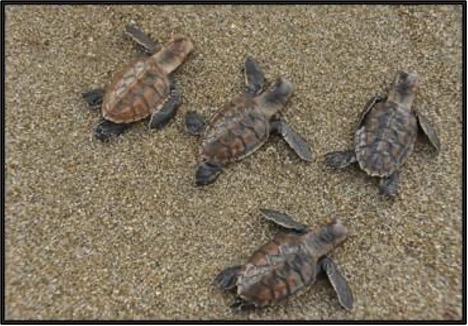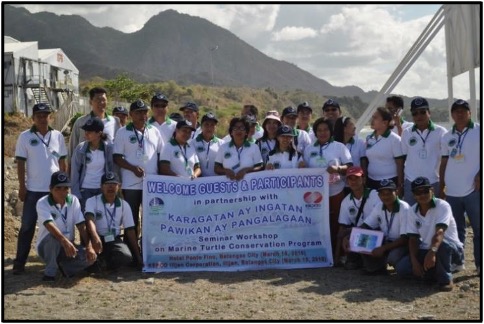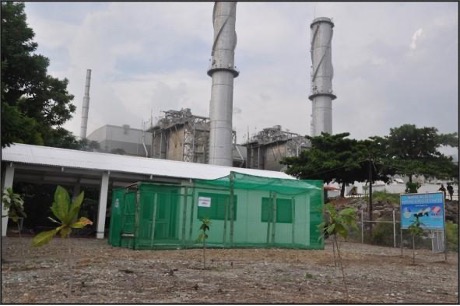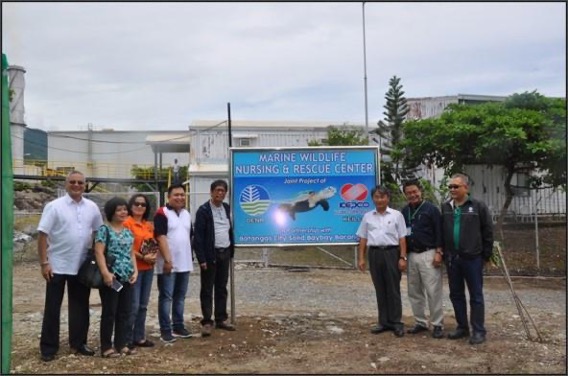Joselito Y. Cortes (ELP 2022) | Sr. Manager, Kepco Ilijan Corporation, Philippine
Growing up in a region in the Philippines where marine life is not ordinary (I live in a landlocked area), I never thought I would be involved in a project surrounding one of the marine ecosystem’s endangered habitats. The Philippines is one big coastal community of more than 110 million people, and our coastline is one of the world’s ten largest, spanning more than 36,000 km. More than 70% of the Local Government Units are located in coastal areas. Batangas City, my workplace, is home to Verde Island Passage (VIP), which is considered one of the world's most productive ecosystems. Conservation International also recognizes it as the center of global shore-fish biodiversity. Sea Turtles, whales, dolphins, and stretches of coral reefs are among those found in the area. Environmentalists and conservation groups frequent the site for its global biological significance.
My work as the Environmental Lead of one of the biggest power stations in the country requires me to not only think about compliance/regulatory issues but also look at community issues. With the Plant located in the VIP, it is considered a nesting area for one of the most critically endangered sea turtle species due to poaching and illegal wildlife trade, the Hawksbill. Having encountered an actual marine turtle nesting at the shorelines of the Plant and constant visits of this species at the power Plant intake, the action needed for us to further our solution was strengthened. The Plant’s management team realized the need to empower the community not only to counter this specific issue, but also the need to take action on the whole marine wildlife ecosystem in the area.
Community Information, Education, and Communication (IEC) Campaigns:
The first step was to educate the community about the Site as a nesting area and why we constantly see marine turtles returning to the area due to footprinting. We coordinated with the Department of Environment and Natural Resources Biodiversity Management Bureau (DENR-BMB), the national agency which oversees this function, to educate and give seminars on the issue at hand and to also talk about coastal resources management on the Barangays which are affected. Capacity Building was also included, especially in the Philippine Marine Wildlife Act and Marine Turtle Management. We visited areas in Luzon that have the same issues as Ilijan on Marine Turtle Nesting Sites and Encounters which have funding from NGOs and LGUs.
Establishment of a Marine Wildlife Rescue and Nursing Center:
The yearly encounters and nestings we had observed prompted the national and local government entities to look more closely at the course of action needed to address the issue. A series of consultative meetings between the Plant, LGU, and the Regulatory Agency was done, which in turn produced collective solutions, among which are:
- The conducting of marine assessment at intake system velocity cap
- The installation of searchlights and notices at shoreline
- The installation of CCTV at intake building trash rack area
- The development of the Plant’s Marine Wildlife Management Procedure
- Visitations and discussions with national researchers at UP Marine Science Institute and UP Institute of Engineering Science and Meteorology
The most proactive among these, which the team identified as a long-term solution is the establishment of a Marine Wildlife Rescue and Nursing Center. Establishing a center is sustainable in ensuring that species are well documented, adequately cared for and accounted for. The components are a nesting and hatchery site, a pool for taking care of injured species before release, and an IEC/Office area. A Memorandum of Agreement (MOA) was signed by the involved LGUs, DENR, and the Plant. The Plant will establish the center, and other stakeholders will identify programs like empowering the community for involvement through financial incentives and volunteerism. Training and employment of a local wildlife enforcement officer and partnership with the local veterinarian are also recognized issues that will be addressed. The DENR-BMB also partnered with the Plant in authorizing to tag encountered wildlife before release for proper accounting. To date, more than 100 Marine Sea Turtles have been tagged and released in the area.
Looking forward, the action and concerted efforts of the community, LGUs, regulatory agencies, and industry to solve the issue at hand and promote sustainable marine protection could lead to better understanding and avoiding conflicts. A collaborative approach is critical in matters like this, and our actions were more than appreciated among stakeholders.







